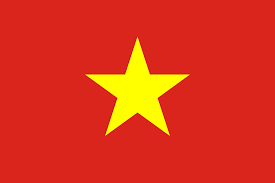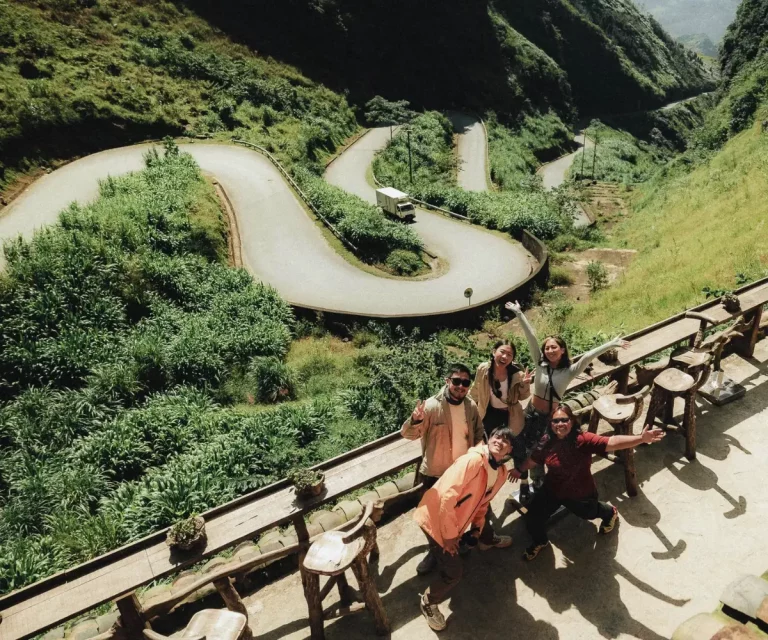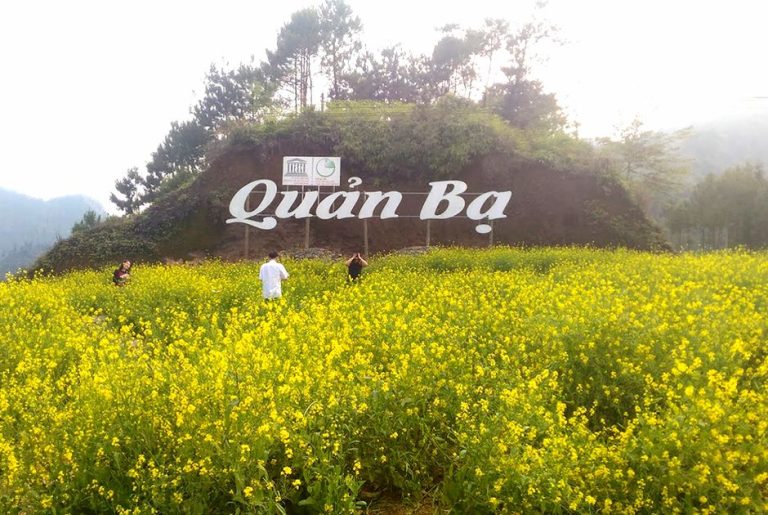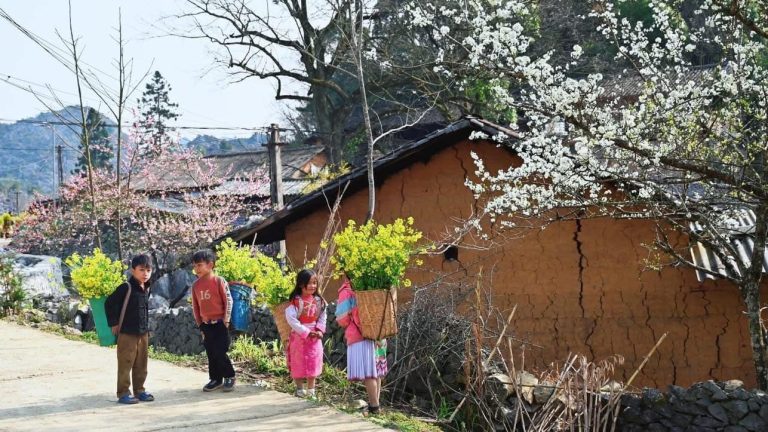When is the best time Ha Giang Loop? Tips for every season
homestayhagiang
Best Time Ha Giang Loop: What to Know Before You Go. When it comes to exploring the breathtaking landscapes and rich cultural tapestry of the Ha Giang Loop in Vietnam, timing can make all the difference. Whether you’re chasing vibrant wildflowers in spring or admiring the golden hues of ripened rice terraces in autumn, your journey will be shaped by the season you choose. Knowing the Best Time Ha Giang Loop not only enhances your visual experience but also helps you avoid peak crowds and weather-related disruptions.
By understanding seasonal changes, identifying peak travel months, and aligning your trip with local festivals, you can tailor your adventure for maximum immersion. From serene mountain passes to colorful cultural events, choosing the right time allows you to enjoy the very best the region has to offer—without the stress of overcrowding. Get ready to discover when to embark on your journey to this hidden northern paradise.
Ideal Seasons for Ha Giang Loop Exploration
The Ha Giang Loop is a journey that transforms with the seasons, each offering its own unique allure. While spring (March to May) and autumn (September to November) are often cited as the Best Time Ha Giang Loop experiences, each part of the year reveals a different facet of this majestic landscape. During these ideal seasons, you’ll encounter mild weather, vibrant scenery, and immersive cultural festivities that allow you to connect deeply with the ethnic traditions of the region.
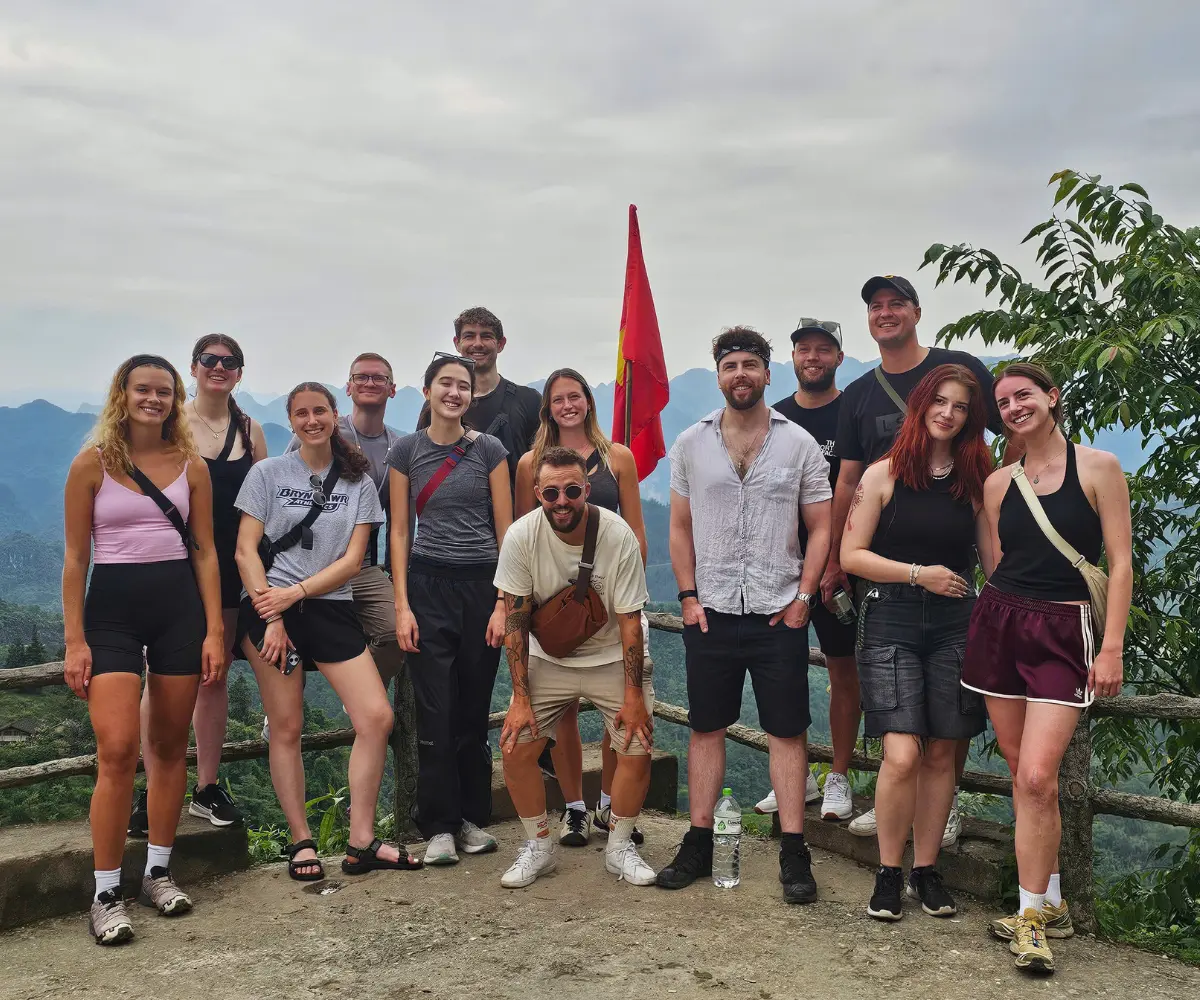
Ha Giang Loop motorbike tours, trekking tours, and cultural discovery tours are ideal for travelers who seek authenticity and raw beauty off the beaten track.
Best Months to Visit Ha Giang
March to May (Spring): Spring marks one of the best times of year to explore the Ha Giang Loop. Temperatures range from 18°C to 25°C (64°F–77°F), providing comfortable riding and sightseeing conditions. Hillsides come alive with peach and plum blossoms, turning the landscape into a canvas of pastel hues. This is also a great opportunity to witness local festivals such as the Kho Muong Festival, where you can engage directly with Hmong communities and experience their rich cultural practices.
September to November (Autumn): Often celebrated as the Best Time Ha Giang Loop, autumn is a favorite among travelers for good reason. The golden rice terraces at harvest time are nothing short of breathtaking, while temperatures remain cool and pleasant between 24°C and 28°C (75°F–82°F). October, in particular, offers a double reward—golden fields and the iconic bloom of buckwheat flowers, painting the countryside in dreamy tones. Cultural events like the Ha Giang Flower Festival further elevate the travel experience.
June to August (Summer): Summer brings a burst of green as rain nourishes the mountains and valleys. Temperatures during this time range from 20°C to 30°C (68°F–86°F), but high humidity and frequent rain showers can make exploration more strenuous. Although not typically regarded as the best time for the Ha Giang Loop, summer does reveal a lush, vibrant ecosystem for those who don’t mind a bit of rain and seek off-season tranquility.
December to February (Winter): While winter is the least crowded time to visit, it offers a quieter, almost mystical side of Ha Giang. Temperatures drop to 5°C–15°C (41°F–59°F), and snow can occasionally dust the higher peaks, creating a surreal contrast against the dramatic limestone mountains. Though this season may not be the Best Time Ha Giang Loop for all travelers, it’s perfect for those seeking solitude, reflection, and a peaceful escape from the usual tourist flow.
Weather conditions during different seasons
The weather conditions across the different seasons can heavily influence your experience on the Ha Giang Loop. The region’s mountainous terrain means that temperatures can vary notably between day and night, along with differing levels of humidity and precipitation. Choosing the Best Time Ha Giang Loop to travel not only enhances comfort but also ensures you fully enjoy the natural beauty and cultural richness of this stunning region.
Spring (March to May): As the most favorable weather conditions prevail, spring greets travelers with mild temperatures and a moderate climate perfect for outdoor exploration. Rain is minimal, thus enabling you to undertake trekking and motorbiking excursions without the worry of slippery roads. During this time, daylight extends, allowing for longer exploration hours across the various paths and scenic routes. For many, this is considered one of the Best Time Ha Giang Loop options due to its floral beauty and comfortable climate.
Summer (June to August): The summer months usher in warmth and moisture, with higher chances of rainfall that can often result in sudden showers. While daytime temperatures soar, evenings tend to cool down slightly. The dense humidity can create a more strenuous travel experience if you aren’t prepared. However, despite the challenges, summer unveils a vibrant, green landscape that some adventurers may find worth the effort—though it’s typically not seen as the Best Time Ha Giang Loop for casual travelers.
Autumn (September to November): Autumn graces Ha Giang with brilliance, featuring crisp and refreshing weather conditions that are a welcome relief from the summer heat. Minimal rainfall typically leads to clear paths and stunning views. Ideal for photography, the rolling hills come alive in a tapestry of colors that captures the very essence of harvest season. Many consider this the Best Time Ha Giang Loop thanks to its breathtaking visuals and comfortable temperatures.
Winter (December to February): While not the most popular season, winter offers its own unique weather experiences. The cold can be biting, especially in the early mornings and at higher altitudes. Mists often blanket the landscape, providing photographs with a mystical touch, while the serenity of fewer tourists allows for an intimate interaction with the untamed nature surrounding the loop. For those seeking solitude and a different perspective, winter could still be a personal Best Time Ha Giang Loop depending on travel preferences.
Impact of festivals on travel timing
Festivals in Ha Giang are not only vibrant celebrations of tradition but also serve as cultural markers that help define the Best Time Ha Giang Loop for travelers seeking deeper local immersion. By aligning your journey with these events, you gain access to a world of music, dance, food, and authentic interactions that transform your visit from scenic to soulful.
Spring Festivals: One of the most culturally enriching experiences during spring is the Kho Muong Festival, typically held in March or April by the Hmong community. This event celebrates the arrival of spring with traditional music, dancing, and local culinary delights. It’s an excellent time for travelers to engage with the ethnic culture while surrounded by blooming peach and plum blossoms. The combination of festive spirit and natural beauty makes this season one of the Best Time Ha Giang Loop options for culturally curious visitors.
Autumn Festivals: Autumn, another contender for the Best Time Ha Giang Loop, is celebrated through events like the Ha Giang Flower Festival. This festival showcases the region’s floral richness, particularly the iconic buckwheat flower. Traditional performances, local food vendors, and festive parades light up the province, all set against the golden backdrop of ripening rice terraces. Attending this festival elevates your experience, combining natural beauty with cultural richness.
Impact on Accommodations and Roads: While festivals create unforgettable memories, they also attract large crowds. If you’re planning your trip during these peak festival periods—often coinciding with the Best Time Ha Giang Loop it’s essential to book accommodations in advance. Additionally, expect increased traffic along the loop, as both tourists and locals travel to join in the celebrations. Although this may slow your journey, it also offers a more dynamic view of life in Ha Giang.
Cultural Understanding: Beyond the festivities themselves, these cultural events provide invaluable opportunities for deeper engagement with the local way of life. Whether through shared meals, traditional games, or spontaneous dance circles, participating in festivals allows travelers to move beyond passive observation. It fosters genuine appreciation and connection—key components of what makes any season feel like the Best Time Ha Giang Loop for a meaningful adventure.
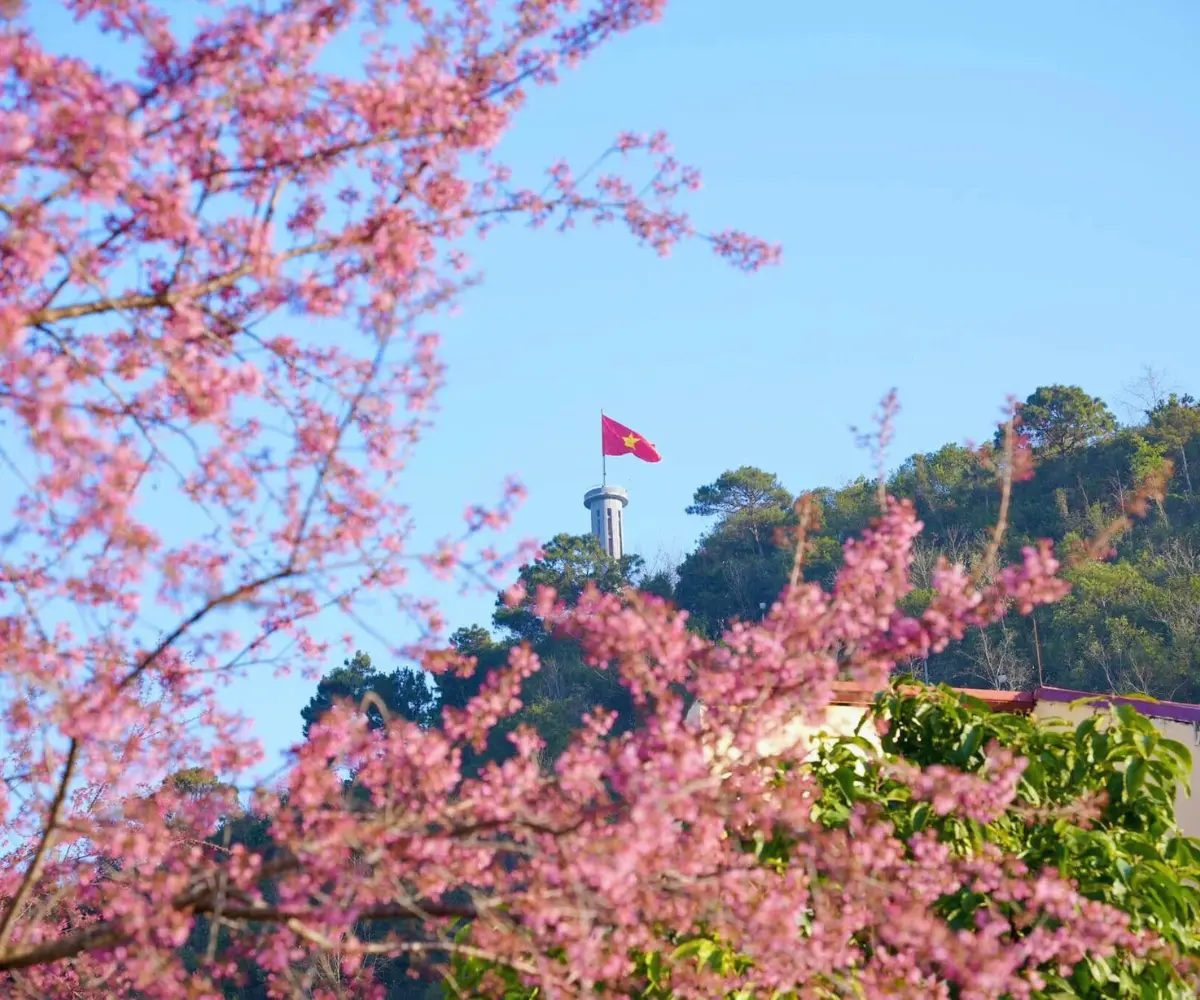
The Lung Cu Flag Tower stands proudly on the peak of Dragon Mountain, with the red flag bearing a yellow star flying high in the sky of Vietnam’s northernmost region.
Considerations for traveling the Ha Giang Loop
As with any meaningful journey, several key factors come into play when planning your adventure through the Ha Giang Loop. Understanding seasonal variations, local festival schedules, and crowd patterns can significantly enhance your overall travel experience—helping you decide on the Best Time Ha Giang Loop that aligns with your personal style.
Each season paints Ha Giang in a different light. Some travelers are drawn to the vibrant natural beauty and cultural vibrancy of spring and autumn, when festivals bring villages to life and landscapes are at their most colorful. Others may prefer the quiet serenity of off-peak periods, enjoying peaceful rides through majestic scenery with minimal tourist presence. Pinpointing what matters most to you—be it photography, cultural connection, or solitude—plays a critical role in determining the Best Time Ha Giang Loop for your journey.
Planning around peak seasons can help you avoid the stress of crowded viewpoints and fully booked accommodations while still soaking in the region’s signature beauty and cultural depth. On the other hand, off-peak travel may come with limited amenities and less predictable weather, but it opens doors to unique, unscripted moments and hidden gems you might otherwise miss.
In the end, how you choose to explore the Ha Giang Loop will shape your memories of it. Take time to assess your travel goals, reflect on the kind of connection you hope to foster with the land and its people, and use that insight to find your personal Best Time Ha Giang Loop the moment when timing, intention, and adventure meet in perfect harmony.
Peak tourist season and its effects
The Best Time Ha Giang Loop roads often aligns with the peak tourist seasons spring (March to May) and autumn (September to November). These periods are marked by pleasant weather, breathtaking scenery, and a vibrant lineup of cultural festivals that draw visitors from across the globe.
Crowded Accommodations: During these high seasons, hotels and homestays can fill up quickly due to the surge in traveler numbers. To avoid last-minute hassles, early booking is strongly recommended especially if you’re eyeing popular stays or want to experience authentic local hospitality through family-run homestays. These accommodations not only offer comfort but also allow for deeper cultural immersion.
Busy Roads: The scenic roads of the Ha Giang Loop though charming can become crowded during peak months. Narrow mountain passes and winding routes may see increased traffic from tour buses and large motorbike groups. To preserve the tranquility of your journey and avoid congestion, it’s wise to start your rides early in the day, particularly along popular segments of the loop.
Enhanced Cultural Experience: While increased foot traffic can occasionally disrupt the serenity of the region, it also brings with it an energetic, festive atmosphere. Traveling during the Best Time Ha Giang Loop gives you the chance to participate in traditional festivals and community events, offering rich opportunities for cultural exchange and unforgettable memories. From vibrant parades to local performances and food markets, every encounter deepens your connection with the spirit of Ha Giang.
Off-peak advantages for visiting
While the Best Time Ha Giang Loop is often associated with spring and autumn, choosing to explore this majestic region during the off-peak seasons—winter and summer—can bring a uniquely rewarding experience that many travelers overlook.
Fewer Crowds: Off-peak months offer the luxury of solitude. With fewer tourists on the road, your journey becomes more peaceful and personal. Quiet viewpoints and untouched landscapes allow for unhurried exploration, while interactions with locals feel more authentic and heartfelt. If you’re someone who values connection over convenience, this may very well be your own Best Time Ha Giang Loop.
Unique Landscapes: Winter drapes Ha Giang in misty charm and sometimes even a dusting of snow, transforming the loop into a tranquil wonderland. In contrast, summer’s lush greenery and dramatic skies breathe life into the mountains and valleys, offering an entirely different visual feast. These seasonal contrasts make for stunning photography and refreshing adventures that diverge from the norm.
Lower Rates: Another notable advantage of off-peak travel is the cost. With fewer visitors, accommodations and tours often come at reduced prices, giving you more flexibility in your budget. The savings can be redirected toward unique experiences—be it a guided trek, a cultural workshop, or an extra night in a charming local homestay.
Comparison of seasonal experiences in Ha Giang
While Ha Giang offers distinct experiences throughout the year, each season unveils its own charm and cultural depth. By evaluating the seasonal highlights side by side, travelers can better identify the Best Time Ha Giang Loop that aligns with their personal travel goals.
Spring vs. Autumn: Spring in Ha Giang is a time of renewal, where the mountains burst into life with vibrant peach and plum blossoms. The fresh, crisp air makes outdoor exploration invigorating, and the scenery is perfect for photography enthusiasts. In contrast, autumn showcases the region’s agricultural beauty with terraced rice fields turning a brilliant golden yellow and local communities celebrating a season of abundance through colorful festivals.
Both seasons are top contenders for the Best Time Ha Giang Loop thanks to their mild weather, cultural vibrancy, and natural splendor.
Summer vs. Winter: Summer delivers lush, green landscapes and dramatic skies, but it also brings humidity and unpredictable downpours that may disrupt travel plans. While less crowded, this season requires flexible planning. On the other hand, winter strips the landscape bare, offering a minimalist beauty blanketed by frost in higher altitudes. For those seeking solitude and reflective moments, this can be their personal Best Time Ha Giang Loop a time of tranquility and rare serenity away from tourist crowds.
Spring vs. autumn experience on the loop
The contrast between spring and autumn experiences on the Ha Giang Loop is notable, both presenting exceptional opportunities for exploration but with unique features that resonate with different travelers.
Spring (March – May): Spring captivates visitors with not only its stunning floral displays but also with mild weather, making it perfect for outdoor activities. The spirit of spring can be felt through local festivities such as the Kho Muong Festival, where travelers can dance and engage in traditional practices with the vibrant Hmong communities. Trekking through the blooming landscapes is exhilarating as the air is filled with fragrant flowers – a moment cherished by nature lovers.
Autumn (September – November): Autumn transforms Ha Giang into a sea of gold, as rice fields ripen, creating natural beauty that is simply breathtaking. This season is marked by the joyful atmosphere of various festivals such as the Ha Giang Flower Festival. The crisp air and clear visibility allow for breathtaking views, making it an ideal period for photography enthusiasts aiming to capture the innate beauty of local agriculture and culture.
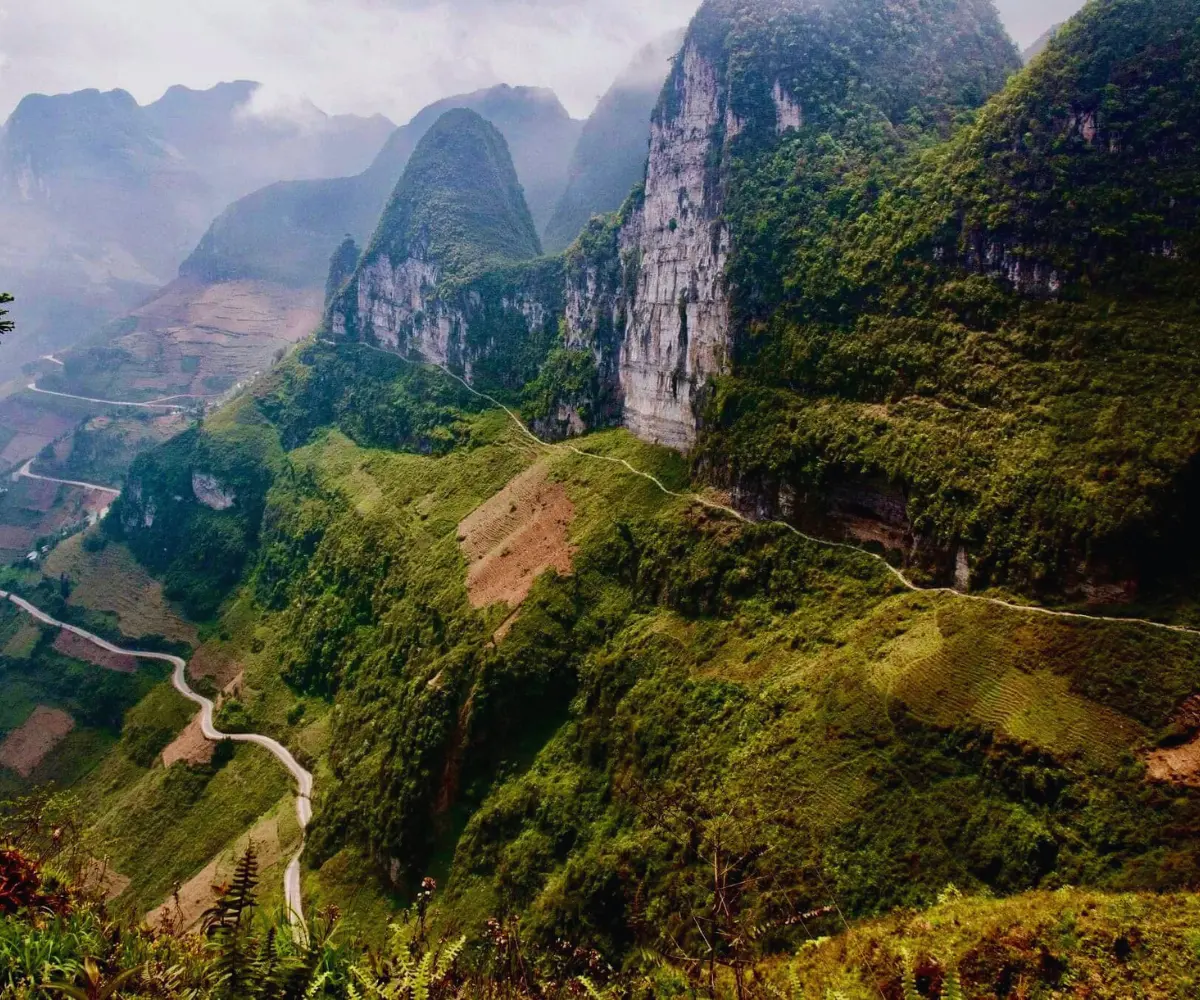
The Dong Van Karst Plateau is Vietnam’s first Global Geopark, famous for its towering, endless ranges of sharp limestone peaks known as “cat ear” rocks.
Summer vs. winter conditions
Comparison of summer and winter travel conditions reveals two profoundly different experiences on the Ha Giang Loop, each with its unique merits and challenges.
Summer (June – August): Traveling during summer introduces you to lush green scenery, as the rains transform the landscape into a vibrant paradise; however, it comes at the cost of humidity and operational challenges that may arise due to sudden storms. The increased rainfall can lead to landslides, and combined with higher temperatures, an interesting but complex experience unfolds for adventurous travelers.
Winter (December – February): Conversely, winter brings solitude and an air of calm, perfect for soul-searching adventures. While colder, the frosty landscapes present a striking contrast with blue skies, providing a quiet beauty that many regard as magical. Off the beaten path, winter travelers get to experience unrefined interactions with the tranquil locals while navigating the wintry beauty.
Essential tips based on the time of year
Packing appropriately for the season is key to making the most of your journey and truly enjoying the Best Time Ha Giang Loop—whatever that time may be for you. Each season comes with distinct weather patterns that influence not only what you’ll see but also how comfortable you’ll feel along the way.
Spring (March to May): Spring’s mild and refreshing climate is perfect for layered clothing. Opt for breathable fabrics you can easily adjust throughout the day. A light rain jacket will come in handy for occasional showers, while sunblock and sunglasses protect against the bright mountain sun. If you’re planning to hike, make sure your shoes are supportive and well-ventilated.
Summer (June to August): If your Best Time Ha Giang Loop falls in the summer, be prepared for hot, humid weather and sudden rainstorms. Lightweight, moisture-wicking clothes are a must. A reliable waterproof poncho or jacket is essential, and so are trekking shoes with good grip. Always carry a reusable water bottle to stay hydrated on the go.
Autumn (September to November): Autumn provides cool mornings and warmer afternoons, requiring flexible layers. Long-sleeved shirts, a mid-weight jacket, and a compact raincoat will keep you comfortable and dry. If you plan to trek through the golden rice terraces, pack lip balm and moisturizer to protect against cool, dry winds.
Winter (December to February): For those whose Best Time Ha Giang Loop is winter, warmth is everything. Pack thermal layers, thick sweaters, and insulated jackets. Don’t forget gloves, scarves, and a beanie to shield against the chill, especially in higher altitudes. Sturdy, waterproof boots are also crucial for tackling muddy trails with confidence.
Packing recommendations for different seasons
When planning your trip to the Ha Giang Loop, packing appropriately for the season plays a vital role in ensuring a smooth and enjoyable journey. Each time of year unveils a unique version of Ha Giang’s beauty, but also demands different clothing and gear to match the climate and terrain. In spring (March to May), when the weather is mild and flowers bloom across the mountains, opt for breathable clothing with light layers, a raincoat for surprise showers, and comfortable trekking shoes for exploring the vibrant landscapes.
Summer (June to August) brings heat and humidity, so lightweight, moisture-wicking fabrics are ideal, along with sun protection like hats and sunscreen. A quality rain jacket is crucial for sudden downpours, and a reusable water bottle helps you stay hydrated throughout the day.
Autumn (September to November) features cool mornings and warm afternoons, making layered outfits a smart choice—include long-sleeved shirts, a light jacket, and a waterproof layer in case of rain. Finally, winter (December to February) calls for thermal wear, insulated jackets, scarves, gloves, and sturdy footwear to keep warm and steady as you journey through frosty paths and serene, misty valleys. With the right preparation, your trip no matter the season—will be both comfortable and unforgettable.
Safety considerations during rainy season
Traveling the Ha Giang Loop during the rainy season—typically from May to September—requires careful planning and extra safety precautions to ensure a smooth and enjoyable journey. One of the most important steps is monitoring the weather regularly, as sudden rainstorms and the risk of landslides can impact road accessibility. Staying informed allows you to plan your daily routes more effectively.
Equipping yourself with high-quality waterproof gear is equally essential; a durable rain jacket and shoes with strong grip will help you stay comfortable and safe when facing slippery or muddy paths. To make the most of the day and minimize risk, timing your travels is key—starting early in the morning often means clearer skies and safer roads.
Additionally, road conditions during this season can be unpredictable due to narrow, winding passes and heavy rain. For those with less riding experience, it’s highly advisable to book a guided tour or “easy rider” service, which not only provides local insight but also enhances safety on challenging terrain. With proper preparation, even the rainy season can offer a unique and rewarding Ha Giang Loop adventure.
Recommended itineraries based on travel timing
When planning your adventure through the Ha Giang Loop, aligning your itinerary with the seasons can significantly enhance your overall experience. The best time to do the Ha Giang Loop depends largely on what you want to see whether it’s the blooming spring flowers or the golden rice terraces of autumn, thoughtful timing will help you capture the region at its most stunning.
In spring, a 4-day itinerary could begin in Ha Giang City and weave through scenic highlights like Bac Sum Pass, Quan Ba’s Twin Hills, and Yen Minh. Continuing to Dong Van, don’t miss the iconic Lung Cu Flag Tower at Vietnam’s northernmost point. The journey culminates at the majestic Ma Pi Leng Pass, where panoramic views of the emerald Nho Que River await.
For an autumn journey, the same route takes on a new charm as rice fields glow in vibrant gold just before harvest. Along the way, make time to visit Dong Van’s early-morning market for a taste of highland culture, and stop by Sung La Valley—an ideal spot for capturing postcard-perfect photos. With landscapes and cultural life shifting throughout the year, crafting your itinerary around the best time Ha Giang Loop ensures you experience the region at its most magical.
Suggested routes for spring travelers
Travelers visiting during spring often considered the best time Ha Giang Loop can make the most of their journey by following a thoughtfully designed route that showcases the region’s vibrant seasonal charm.
On Day 1, begin your adventure from Ha Giang City, where blooming flowers set the tone for a scenic journey. As you head toward Yen Minh, take in panoramic mountain views and breathe in the crisp spring air that makes this time of year so inviting.
Day 2 brings you from Yen Minh to Dong Van, offering a route lined with wildflowers and rugged peaks. The valleys along the way are painted in soft hues, creating postcard-worthy scenery at every turn.
On Day 3, depart Dong Van for Meo Vac, traversing the legendary Ma Pi Leng Pass. This stretch not only delivers awe-inspiring views of the Nho Que River but also offers opportunities to engage with ethnic minority cultures, especially during springtime festivals and communal events.
Day 4 is your return from Meo Vac to Ha Giang City. This leg provides a chance to slow down, appreciate the peaceful countryside, and stop at local villages for a deeper connection with the land and its people.
By aligning your itinerary with spring the best time to do the Ha Giang Loop you ensure a journey filled with beauty, culture, and meaningful encounters.
Ideal stops for autumn visitors
For those eager to make the most of their visit during the autumn season often regarded as the best time Ha Giang Loop the journey offers a perfect harmony of breathtaking scenery and cultural authenticity that is hard to match.
Day 1 begins with a scenic drive from Ha Giang City to Yen Minh. Along the way, you’ll witness expansive golden rice terraces at their peak before harvest, providing exceptional photo opportunities. Take time to explore the charming ethnic villages dotted along the road, where the warm hospitality of the locals enhances the experience.
On Day 2, continue from Yen Minh to Dong Van. The road is painted with hues of amber and gold, offering a visual feast. Autumn is also a culinary celebration here—be sure to stop at local markets and try seasonal dishes rich in wild herbs and mountain-grown produce.
Day 3 takes you from Dong Van to Meo Vac via the spectacular Ma Pi Leng Pass. This stretch not only delivers unmatched views of terraced landscapes but also introduces you to vibrant highland cultures through local interactions and impromptu cultural gatherings that come alive in the fall.
Finally, on Day 4, journey back to Ha Giang City while allowing time for spontaneous stops. Autumn’s charm lingers in every village and winding path, making it easy to stumble upon hidden gems that add richness to your trip. With its crisp air, golden fields, and festive atmosphere, autumn truly stands out as the best time to do the Ha Giang Loop.
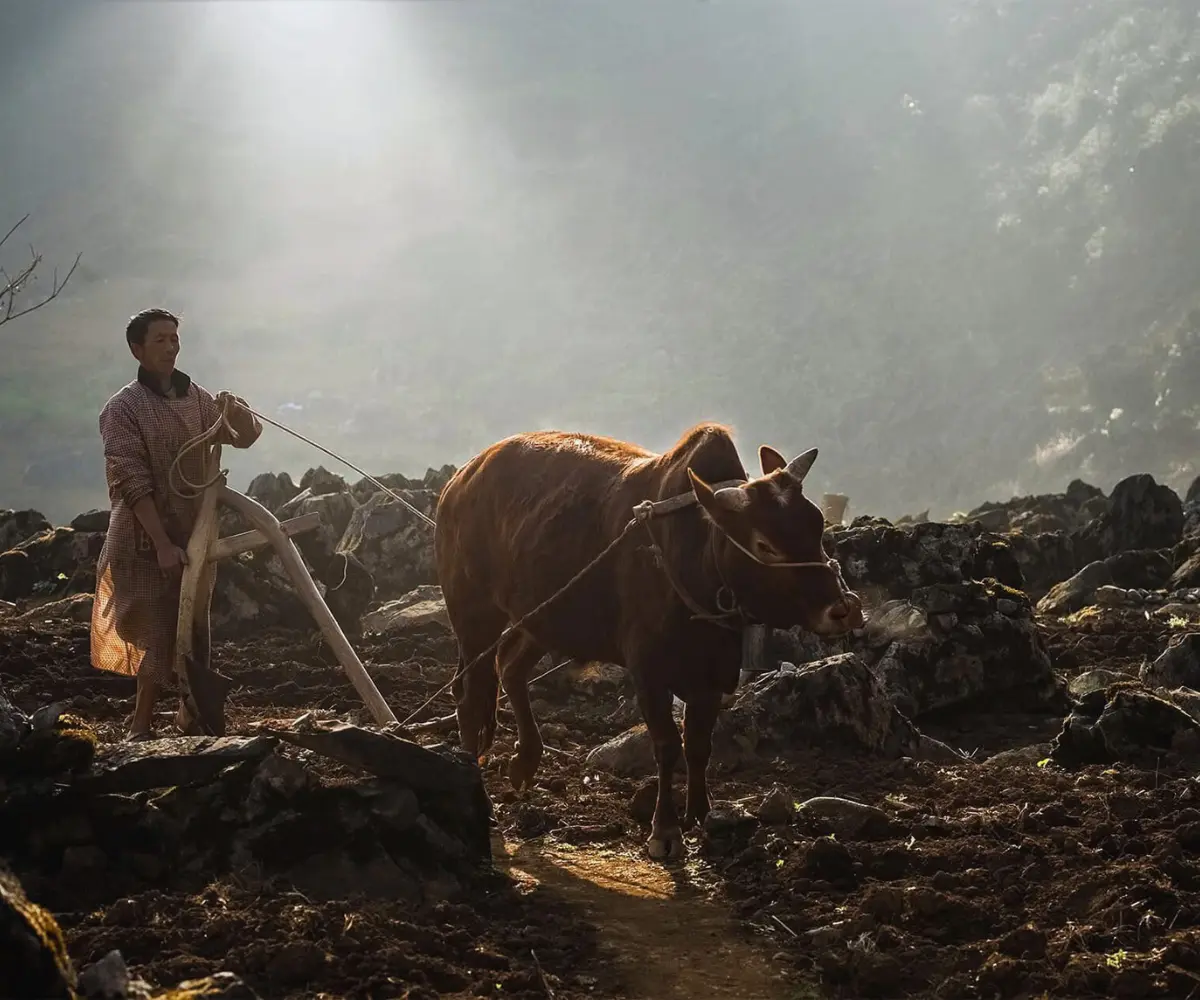
The life of ethnic communities in the highlands of Ha Giang is characterized by simplicity, authenticity, and a deep connection with the surrounding mountains and forests.
Choose a reputable and high-quality tour operator
Selecting a reputable tour operator for your Ha Giang Loop adventure plays a crucial role in shaping the overall quality, safety, and authenticity of your journey. Whether you’re planning your visit during the best time Ha Giang Loop spring (March to May) or autumn (September to November) or exploring off-peak, having a trusted partner ensures your experience is seamless and enriching.
Start by researching reputation and reviews. Reliable names like Ha Giang Nomad and Epic Tours often receive praise for their professional organization and knowledgeable local guides. Pay attention to feedback highlighting service quality, safety measures, and overall trip satisfaction.
Tour flexibility is another vital aspect. Top operators offer a range of customizable packages, from short 2-day getaways to immersive 4-day loops. Depending on your comfort level, you can choose between self-driving, riding pillion with an “Easy Rider,” or traveling by car an excellent option for those less familiar with mountainous roads.
An experienced local guide is indispensable, especially when navigating tricky terrains and remote routes. Beyond just ensuring your safety, they provide valuable cultural and historical insights, deepening your connection to the ethnic communities and dramatic landscapes.
Most quality tours also include accommodation and meals. Prioritize providers that arrange authentic stays such as local homestays which not only offer comfort but also a window into traditional highland lifestyles. Shared meals in these settings often become highlights of the trip.
Finally, don’t forget to confirm that your tour aligns with the best time Ha Giang Loop. Reputable operators typically schedule their itineraries to coincide with the region’s most beautiful and accessible months, ensuring you get to experience Ha Giang at its finest.
The Ha Giang Loop in Vietnam offers an unparalleled escape into nature and an enriching cultural experience. Selecting the best time to visit, either in the vibrant blossoms of spring or the golden hues of autumn, significantly shapes your journey. Each season brings unique landscape beauty, alternating weather, and an array of local festivals, pushing many travelers to engage more deeply with the community.
Whether navigating smooth roads during peak tourist season or savoring the tranquility of off-peak months, preparation through appropriate packing recommendations and thorough research into reputable tour operators is essential. This rewarding experience can lead to profound memories in the serene surrounding mountains, immersing in the rich cultural fabric woven intricately through the heart of the Ha Giang Loop.
Consider this journey as more than just a trip, but a narrative filled with shared traditions, personal moments, and breathtaking vistas making it truly a once-in-a-lifetime experience.








